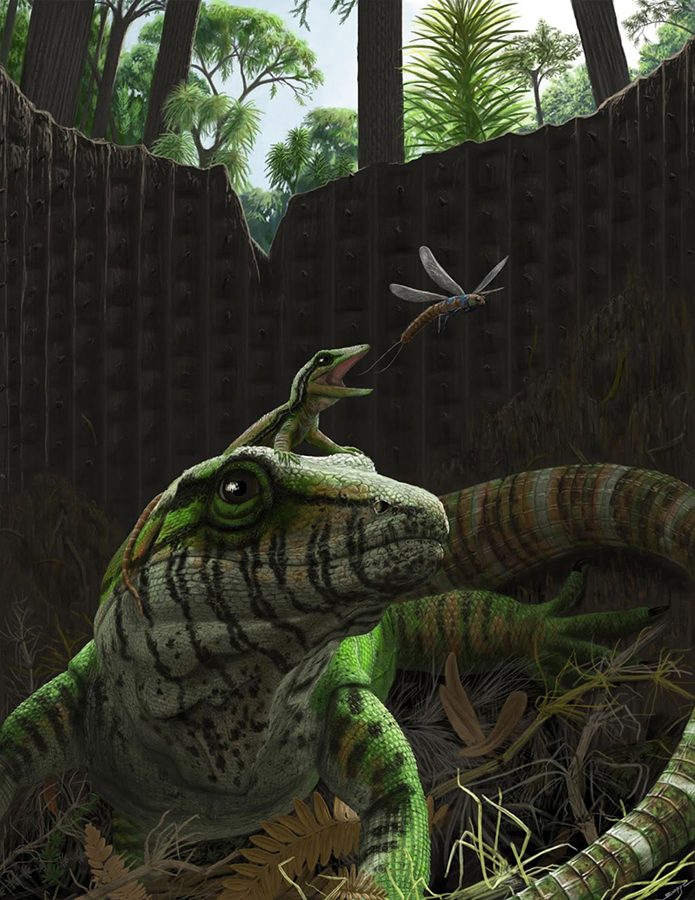Dendromaia unamakiensis: 305-Million-Year-Old Fossil Shows Parent Caring for Its Offspring

A Carboniferous-period fossil found in Nova Scotia, Canada, shows an ancient creature called a varanopid synapsid (family Varanopidae) caring for its young.
“Parental care is a behavioral strategy where parents make an investment or divert resources from themselves to increase the health and chances of survival for their offspring,” said paleontologist Professor Hillary Maddin and her colleagues from Carleton University and Fundy Treasures.
“While there are a variety of parental care strategies, prolonged postnatal care is amongst the most costly to a parent.”
“This form of parental care is particularly common in mammals, as all mammalian offspring demand nourishment from their mothers.”
“However, there is still little understanding of the evolutionary history of this behavior.”

Professor Maddin’s team found the fossilized remains of an adult creature and an associated juvenile inside a lithified tree stump on Cape Breton Island, Nova Scotia.
The specimen represents not only a new species but also belongs to an entirely new genus of varanopid synapsid.
The researchers named the ancient animal Dendromaia unamakiensis.
“This is the earliest evidence of prolonged postnatal care in a vertebrate,” Professor Maddin said.
“The adult animal appears to be concealing and protecting a juvenile in a den. This behavior is very common in mammals today.”
“It is interesting to see this animal, which is on the evolutionary line leading to mammals, exhibiting this behavior so early.”
The discovery is reported in a paper in the journal Nature Ecology & Evolution.
_____
H.C. Maddin et al. 2020. Varanopid from the Carboniferous of Nova Scotia reveals evidence of parental care in amniotes. Nat Ecol Evol 4: 50-56; doi: 10.1038/s41559-019-1030-z
Source: www.sci-news.com/








